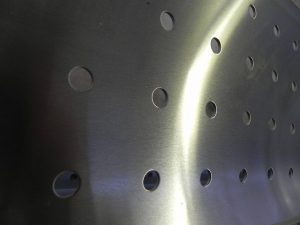
Found in everything from silverware and household appliances to electronics, building frames, automobiles and more, steel is one of the world’s most important materials. Classified as an iron alloy, it’s both strong and lightweight. There are different ways to make steel, however, one of which is hot rolling.
Hot-Rolled Steel Explained
As the name suggests, hot rolling is a metalworking process that involves compressing flat panels of heated steel between two or more rollers. The steel is first heated above its recrystallization point — about 1,700 degrees Fahrenheit — after which it’s forced between a series of cylindrical rollers.
During a typical hot rolling process, thick rectangular pieces of steel, known as billets, are heated in a furnace. Once heated, the billets are processed into thinner sheets of metal. The heated steel is then fed through a rolling machine that contains a series of rollers. As the steel travels through the rolling machine, the rollers compress it. Rolling machines used for hot rolling contain anywhere from two to eight rollers on average, with eat set of rollers working to compress the heated steel as it travels through the machine.
Benefits of Hot-Rolled Steel
Hot rolling allows metalworking companies to manipulate the shape of steel more easily. When steel is heated above its recyrstalization point, it becomes more malleable. The heat to which the steel is exposed changes its physical properties, making it easier to bend, shape or otherwise deform.
In addition to being easier to work with, hot-rolled steel also has a uniform thickness. Rolling ensures that the finished steel isn’t thick in some areas and thin in other areas. It will have a uniform thickness thanks to the way in which the rollers compress the heated steel.
How Hot-Rolled Steel Differs From Cold-Rolled Steel
An alternative method used to manipulate the shape and physical properties of steel is cold rolling. Upon hearing the term “cold rolling,” you might assume that it doesn’t involve heat, but this isn’t necessarily true. Cold rolling requires the same steps as hot rolling but with an added phase of rolling at the end.
With cold rolling, steel is heated above its recrystallization point and fed through a series of rollers, which are the same steps as hot rolling. The difference is that cold rolling requires an additional phase of rolling, which is performed at or near room temperature. Cold rolling is a more laborious process, though it results in a stronger steel.
